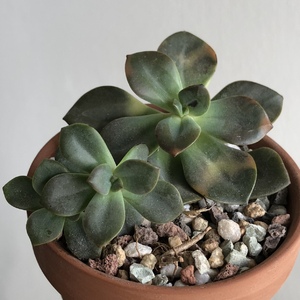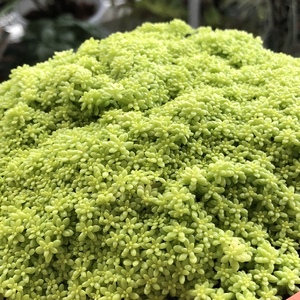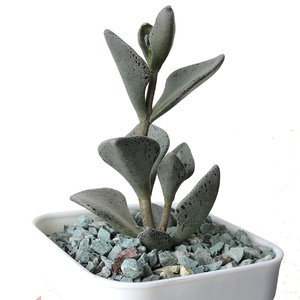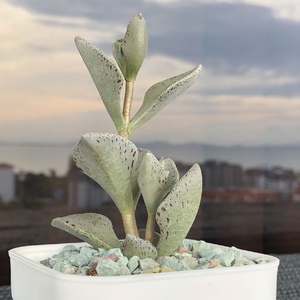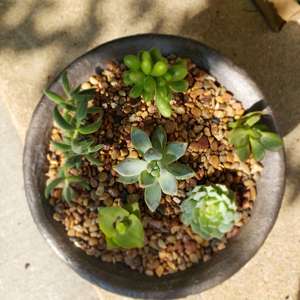文章
Miss Chen
2018年08月26日

With more than 400 species, Aloe is one of the largest groups of succulents. The most widely planted aloe, Aloe vera, is a favorite house plant and has naturalized in North Africa, India, the Caribbean, South America, and other frost-free areas, according to the Cactus and Succulent Society of America. Originating largely in Africa and the Arabian Peninsula, aloe is grown primarily for its spiky leaves, but many aloes also produce flowers.

Aloe vera
The aloe vera plant is the most familar and widely cultivated aloe. Gel from inside aloe vera leaves is used as a first aid treatment for burns, herbal remedies, food supplements, and in cosmetics. Succulent grayish green leaves up to 20 inches long grow from a dense rosette at the plant's base. Aloe vera produces offset pups, which are propagated and grow to adult size in individual containers.
Tree aloes
The largest African tree aloe is Aloe barberae, reaching almost 50 feet high with a stem diameter of approximately 3 feet. Unlike aloe vera, propagation is usually from seeds or stem cuttings. Another tree aloe is Aloe dichotoma (quiver tree). The quiver tree can grow to 30 feet. Native to South Africa and Namibia, tree roots are used in traditional medicine to treat asthma and tuberculosis.
Mountain aloes
Aloe marlothii is known as the mountain aloe. Described by Kew Gardens as "one of the most iconic of the hundreds of aloes occurring in Africa," this species fills South African hillsides with hundreds of plants. This is a tall aloe, 6 to 12 feet tall and rosette crown. Leaves are dull green with numerous short spikes on leaf edges and flat surfaces. Some ethnomedical uses of Aloe marlothii leaf gel include treating internal parasites in humans and livestock.

Miniature aloes
Miniature aloes include Aloe descoingsii, labeled the world's smallest aloe. A native of Madagascar, individual heads are approximately 1 1/2 inches across. Triangular leaves with whitish specks sit below small orange flowers. A little bigger is Aloe jucunda, with heads slightly larger than 2 inches. Another miniature aloe is Aloe haworthioides, with 2-inch heads, dark green leaves and hairy bristles.

Aloe vera
The aloe vera plant is the most familar and widely cultivated aloe. Gel from inside aloe vera leaves is used as a first aid treatment for burns, herbal remedies, food supplements, and in cosmetics. Succulent grayish green leaves up to 20 inches long grow from a dense rosette at the plant's base. Aloe vera produces offset pups, which are propagated and grow to adult size in individual containers.
Tree aloes
The largest African tree aloe is Aloe barberae, reaching almost 50 feet high with a stem diameter of approximately 3 feet. Unlike aloe vera, propagation is usually from seeds or stem cuttings. Another tree aloe is Aloe dichotoma (quiver tree). The quiver tree can grow to 30 feet. Native to South Africa and Namibia, tree roots are used in traditional medicine to treat asthma and tuberculosis.
Mountain aloes
Aloe marlothii is known as the mountain aloe. Described by Kew Gardens as "one of the most iconic of the hundreds of aloes occurring in Africa," this species fills South African hillsides with hundreds of plants. This is a tall aloe, 6 to 12 feet tall and rosette crown. Leaves are dull green with numerous short spikes on leaf edges and flat surfaces. Some ethnomedical uses of Aloe marlothii leaf gel include treating internal parasites in humans and livestock.

Miniature aloes
Miniature aloes include Aloe descoingsii, labeled the world's smallest aloe. A native of Madagascar, individual heads are approximately 1 1/2 inches across. Triangular leaves with whitish specks sit below small orange flowers. A little bigger is Aloe jucunda, with heads slightly larger than 2 inches. Another miniature aloe is Aloe haworthioides, with 2-inch heads, dark green leaves and hairy bristles.
1
0
Simplysucculent
2018年08月22日

I’ve began watering my succulents with ice cubes, and these jellybeans have recovered so well! They are very vibrant and the aerial roots are withering away.

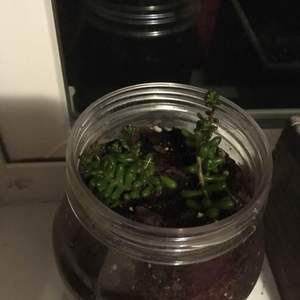


1
0
文章
Miss Chen
2018年08月14日

The agave and aloe plants are succulents with fleshy, pointed leaves and a sculptural quality. Both provide a dramatic focal point in a garden. They are admired not only for their attractive form, but for their easy upkeep and drought tolerance. Though they appear superficially similar, there are many differences between the two plants. Agave is used for rope, tequila and a sugar substitute. Aloe is used for lotions and gels.
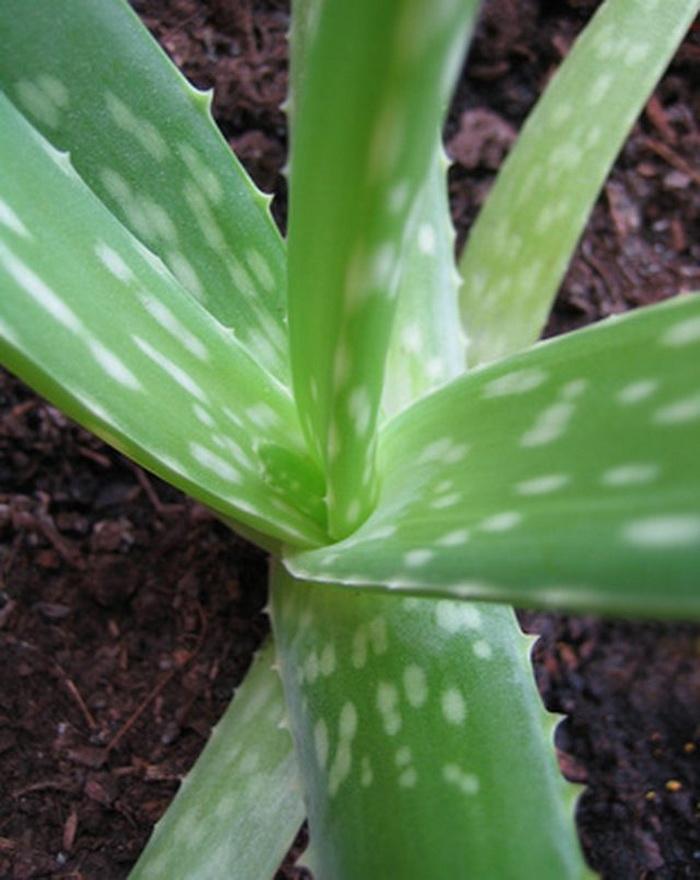
Origin
Though both agave and aloe are native to desert regions, they come from different areas of the world and different families in the plant kingdom. Agave is from the Agavaceae family and is native to Mexico. It is hardy in U.S. Department of Agriculture zones 8 to 10. Aloe, a member of the tree lily family known as Aloaceae, is native to parts of Africa and Arabia. It is hardy in zones 9 and 10.
Size
Agaves range from 6 inches to 10 feet tall. The smallest is the Agave parviflora, which has sharp pointy leaves with curled fibers on the ends. The Agave mapisaga, on the other end of the spectrum, grows 10 feet feet tall and wide. There are more than 300 species of aloe, ranging from 2 inches across to tree height. Aloe vera, often grown as a houseplant and kept in the kitchen, contains a gel that helps heal minor burns. Larger aloe, such as the 50-foot-tall Aloe bainesii, has ''a grotesquely thickened trunk and tapering branches that make it look like a character out of a Dr. Seuss story,'' according to ''The Book of Outdoor Gardening.''
Flowers
Many varieties of aloe have warmly colored red-orange, yellow or white flowers that replenish themselves throughout the plant's life. Aloe marlothii, for example, has side-leaning flowers that resemble red-hot flames blowing in the wind. It blooms year-round. A few agaves have flowers, but most of these bloom only once in the entire life of the plant. Queen Victoria agave is one flowering variety of agave. It blooms only after the plant has lived a decade or more and only in summer.

Leaves
The leaves of the aloe and agave may look similar, but they are actually quite different. The agave has a fibrous leaf, with a vascular system of fibers running the entire length of each leaf. These fibers are used to make rope and string. The leaves often last the entire life of the agave. Aloe, on the other hand, has leaves with a gelatinous interior. Fibers are not present. Another difference is the leaf margin. Agave has distinct, sharp teeth on its margin, with a line of demarcation. Aloe has what appear to be teeth, but are actually just elongations of the leaf without any line of demarcation.

Origin
Though both agave and aloe are native to desert regions, they come from different areas of the world and different families in the plant kingdom. Agave is from the Agavaceae family and is native to Mexico. It is hardy in U.S. Department of Agriculture zones 8 to 10. Aloe, a member of the tree lily family known as Aloaceae, is native to parts of Africa and Arabia. It is hardy in zones 9 and 10.
Size
Agaves range from 6 inches to 10 feet tall. The smallest is the Agave parviflora, which has sharp pointy leaves with curled fibers on the ends. The Agave mapisaga, on the other end of the spectrum, grows 10 feet feet tall and wide. There are more than 300 species of aloe, ranging from 2 inches across to tree height. Aloe vera, often grown as a houseplant and kept in the kitchen, contains a gel that helps heal minor burns. Larger aloe, such as the 50-foot-tall Aloe bainesii, has ''a grotesquely thickened trunk and tapering branches that make it look like a character out of a Dr. Seuss story,'' according to ''The Book of Outdoor Gardening.''
Flowers
Many varieties of aloe have warmly colored red-orange, yellow or white flowers that replenish themselves throughout the plant's life. Aloe marlothii, for example, has side-leaning flowers that resemble red-hot flames blowing in the wind. It blooms year-round. A few agaves have flowers, but most of these bloom only once in the entire life of the plant. Queen Victoria agave is one flowering variety of agave. It blooms only after the plant has lived a decade or more and only in summer.

Leaves
The leaves of the aloe and agave may look similar, but they are actually quite different. The agave has a fibrous leaf, with a vascular system of fibers running the entire length of each leaf. These fibers are used to make rope and string. The leaves often last the entire life of the agave. Aloe, on the other hand, has leaves with a gelatinous interior. Fibers are not present. Another difference is the leaf margin. Agave has distinct, sharp teeth on its margin, with a line of demarcation. Aloe has what appear to be teeth, but are actually just elongations of the leaf without any line of demarcation.
0
0





